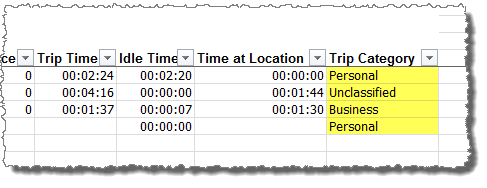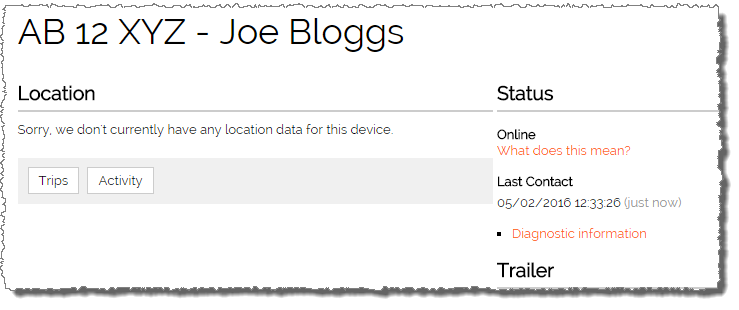Driver identification
When a vehicle can be used by different people it can be important to know who the driver was at any given time. This might be for generating timesheets, or responding to an incident such as a speeding ticket.
Our driver identification module can help with this, as well as provide other important features such as differentiating between personal and business mileage or enabling privacy out of working hours.
Identification and authorisation
Our driver identification module allows drivers to easily register themselves so that their details are automatically associated with each trip.
We support several different methods of identification, including 1-wire or iButton tags, Garmin sat-navs, or even from tachograph cards.
With an appropriate installation, identification can also be elevated to authorisation which means drivers must use their own personal fob in combination with the ignition key in order to start a vehicle.

Personal and business trips

In many countries there can be tax implications for drivers using company vehicles for personal trips. Drivers can flag trips as being either for personal or business use with different 1-wire tags, or alternatively a physical toggle switch can be installed in the vehicle.
The analytics module provides a number of reports that can breakdown trips into the different classifications.
Privacy
Sometimes it can be desirable to suspend location reporting temporarily, essentially turning off the tracking of a vehicle. This might be because a driver is able to use a company vehicle for personal use at weekends but wishes to keep their movements private, or a manager may be making a visit to a sensitive location that other employees shouldn’t know about.
Privacy mode can be controlled in-vehicle by the driver with a 1-wire fob, or by an authorised user remotely via the website. Scheduled actions can also allow this to be done automatically at set times during the week too.
When privacy mode is active, the location of the vehicle is not recorded so it can’t be viewed either at the time or retrospectively, for example in reports.

